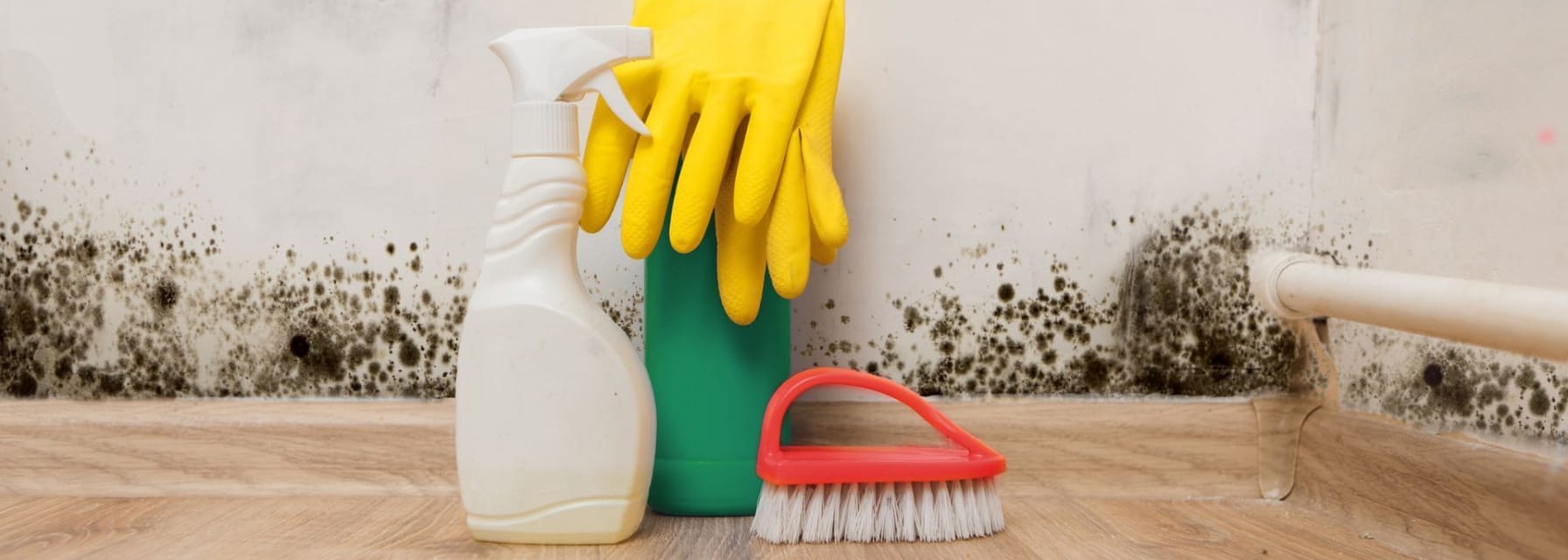How to test for mold in your apartment?
No one wants to experience mold in their apartment. Make sure your home stays clean and keep yourself safe with these tips.

There are certain things that you never want to see in your home, one of which is mold. Not only can mold cause damage to various areas within the home, but it also spreads incredibly fast.
Luckily, there should never be mold in an apartment when you first move into it.
In fact, this is one of the rights you have as a tenant. But that does not mean that you do not need to do a thorough visual inspection before signing the lease.

However, no matter how thorough an inspection you do, it will not make much of a difference if you do not know what you are looking for. That is why this article breaks down how to test for mold in your apartment.
Mold vs. dirt
One of the most common mistakes that tenants make when trying to learn how to test for mold is that they do not know how to distinguish between dirt and mold.
When mold is in its early stages and takes on the form of mildew, it can often be hard to tell what is dirt and what is the far more serious mold.
Fortunately, there is a test that can be done that will quickly determine whether or not the questionable patch of darkness is just dirt or not.

The tenant should combine one part bleach with 16 parts water and then take a cotton swab and dip it in the solution. They should then dab the cotton swab onto the surface of the questionable area.
If the dark patch remains relatively the same shade, then it is likely just dirt.
However, if the area responds by significantly lightning shortly afterward, then this is a clear sign that it is mold.
Gently poke the surface with a sharp object
When mold is still just mildew, it is relatively harmless to the home.
Besides being hard to clean, it does not pose any structural risk to anything within the home.
However, once mold has moved past the mildew stage, it can start to penetrate the structure and cause rot to occur.
Tenants should be aware of how to test for mold progression so that they will know whether or not rot has started to occur in their apartment. If it has, then they can take the proper steps to stop it before it gets too serious.
A simple way to find out whether or not rot has started to significantly set in is to take a screwdriver or a similar sharp object and gently poke the surface where the suspected mold is located. The proper reaction should be that the wall remains firm and does not receive any damage.
However, if the wood feels at all soft or crumbles even slightly, then this is a very bad sign.
Once this happens, it is very likely that the mold fungi have significantly set in already and started the rotting process.
Search for leaking pipes

Since mold requires moisture to be able to survive, it is important that a tenant reduces the amount of moisture that lingers in their apartment.
One of the best ways to do this is to make sure that there are no leaky pipes located anywhere in the home. The two most obvious locations to check for this would be the bathroom and the kitchen.
If the bathroom sink and tub do not appear to be leaking, then the tenant should check their kitchen sink as well.
If they run the water and do not see any of it leaking out of the pipe at any point, then they should be all clear of leaks.
While they are down there, they should also be sure to check for any visual signs of mold near the water pipes.
If any of them have leaked and caused mold to develop, the mold would not necessarily be right beside the pipe.
Moisture can travel incredibly far, depending on what type of material the wall is made of. The early symptoms of mold may be located several inches or even an entire foot away from where the pipe is located.
What to do once mold has been identified
Once a tenant has followed the proper protocol of how to test for mold and believes that they have identified mold within their apartment, they need to take the proper steps to get it removed.
This usually involves contacting the landlord so that they may hire the appropriate services to come in and remove it.
Depending on how extensive the damage is from the mold, this could be a fairly lengthy and expensive process.
That is why a tenant should be doing everything they can to try and prevent mold as soon as they move in anywhere. Letting mold faster in their apartment is a good way to end up losing their damage deposit.
Enjoy the benefit of knowing that your apartment is completely mold-free by getting one of the pristine apartments offered through Blueground.
Whether you need to rent them for a month or a year, Blueground has a vast option of fully furnished apartments in many cities throughout the world.
From Boston to Istanbul, all of the modern apartments come with optional weekly cleaning. Through scheduled cleanings and deep cleans between tenants, Blueground’s professional cleaners can spot and prevent mold in its tracks.








